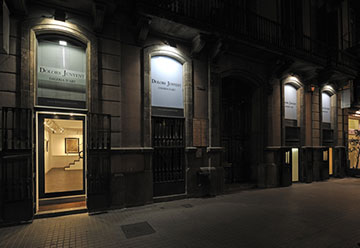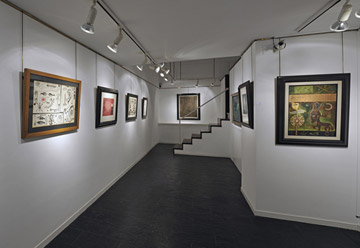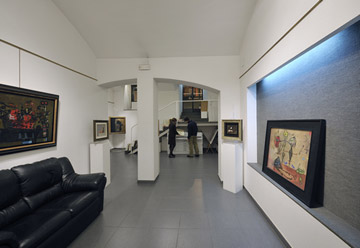- Amat, Frederic
- Amat, Gabriel
- Arranz Bravo
- Arroyo
- Barbara
- Barcelo
- Bartolozzi
- Bea
- Becquer
- Benet
- Bird
- Bores
- Brinkmann
- Brossa
- Cardenas
- Carral
- Casas
- Castillo
- Chancho
- Cisquella
- Clave
- Corbero
- Corneille
- Croft
- Cuixart
- Domingo
- Fabres
- Farreras
- Feito
- Fenosa
- Forteza
- Genovart
- Gimeno
- Gonzalez
- Gonzalo
- Graner
- Granyer
- Grau
- Grau Sala
- Gudiol
- Guinovart
- Hernandez Mompo
- Hernandez Pijuan
- Jorn, Asger
- Junyent, Oleguer
- Lam
- Llena
- Lloveras
- Lopez Ramon
- Marin
- Marsans
- Marsillach
- Marti Alsina
- Matilla
- Meifren
- Menchu Gal
- Meseguer
- Mir
- Mira
- Miro
- Moore
- Moragas
- Munoz
- Noland
- Olive
- Palazuelo
- Palencia
- Pazos
- Perejaume
- Perez Villalta
- Picasso
- Plantalech
- Plasencia
- Plensa
- Ponç
- Puig
- Rafols Casamada
- Ramis
- Rasero
- Rebull
- Riera i Arago
- Rivera
- Roca Sastre
- Roig
- Roig Soler
- Rossell
- Rueda
- Saura
- Serra
- Sicilia
- Solano
- Subirachs
- Sunyer
- Tamayo
- Tapies
- Tharrats
- Togores
- Torres Garcia
- Ubeda
- Ucles
- Valdes
- Valls
- Vedova
- Viladecans
- Vilagrasa
- Villa
- Zao Wou-ki
Artists +
Hours
Feito
Luis Feito López was born in Madrid on October 31, 1929. He studied at the School of Fine Arts of San Fernando, where he enrolled in 1950. Four years later, he held his first solo exhibition at the Buchholz Gallery in his hometown. He also exhibited in Madrid at the Santa Fe Gallery. From then on, he regularly showcased his work in major cities around the world, including Paris, Milan, New York, Helsinki, Tokyo, and Rome.
In 1956, while studying in Paris, Feito was influenced by automatism and matièriste painting, working with oil paste and sand, using a color palette based on blacks, whites, and ochres. In 1957, Luis Feito founded the El Paso group alongside painters Antonio Saura, Manolo Millares, and Rafael Canogar, as well as writers Manuel Conde and José Ayllón.
In the 1970s, he introduced a fourth color, red, into his works and shifted towards abstraction. Around 1975, his work leaned towards geometrization, culminating in the late 1970s with his stage of white paintings.
Most of Feito’s works lack titles and are identified through numbering. Throughout his career, he received various awards, including the UNAM Prize at the First Paris Biennial (1959) and the David Bright Prize at the XXX Venice Biennale.
In 1985, he was appointed Officer of Arts and Letters of France, and in 1993, he became a Commander of the Order of Arts and Letters of France. In 1998, he received the Gold Medal of Fine Arts and was named a member of the Royal Academy of Fine Arts of San Fernando, Madrid. In 2001, he received the Critics’ Award at Estampa, Madrid, and the following year, he was awarded the Grand Prize AECA at Arco’02, Madrid.
The work of Luis Feito is part of private collections and the most renowned museums worldwide.








